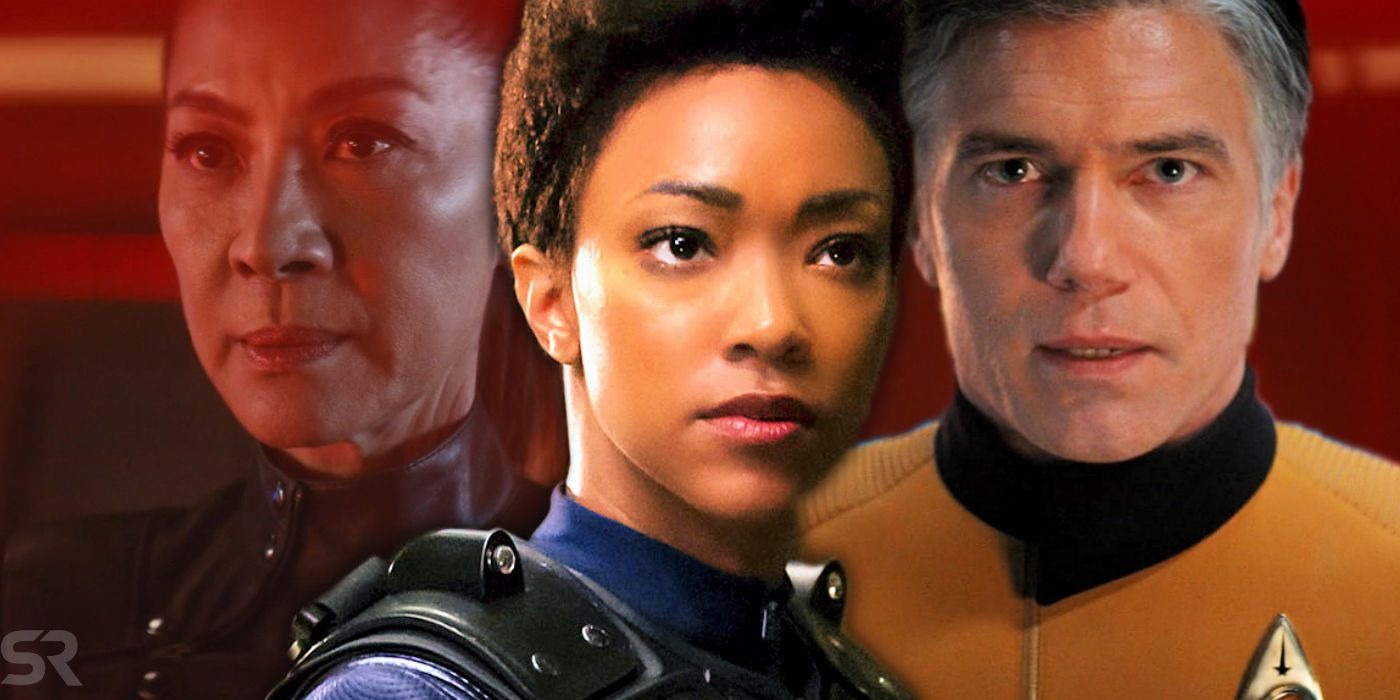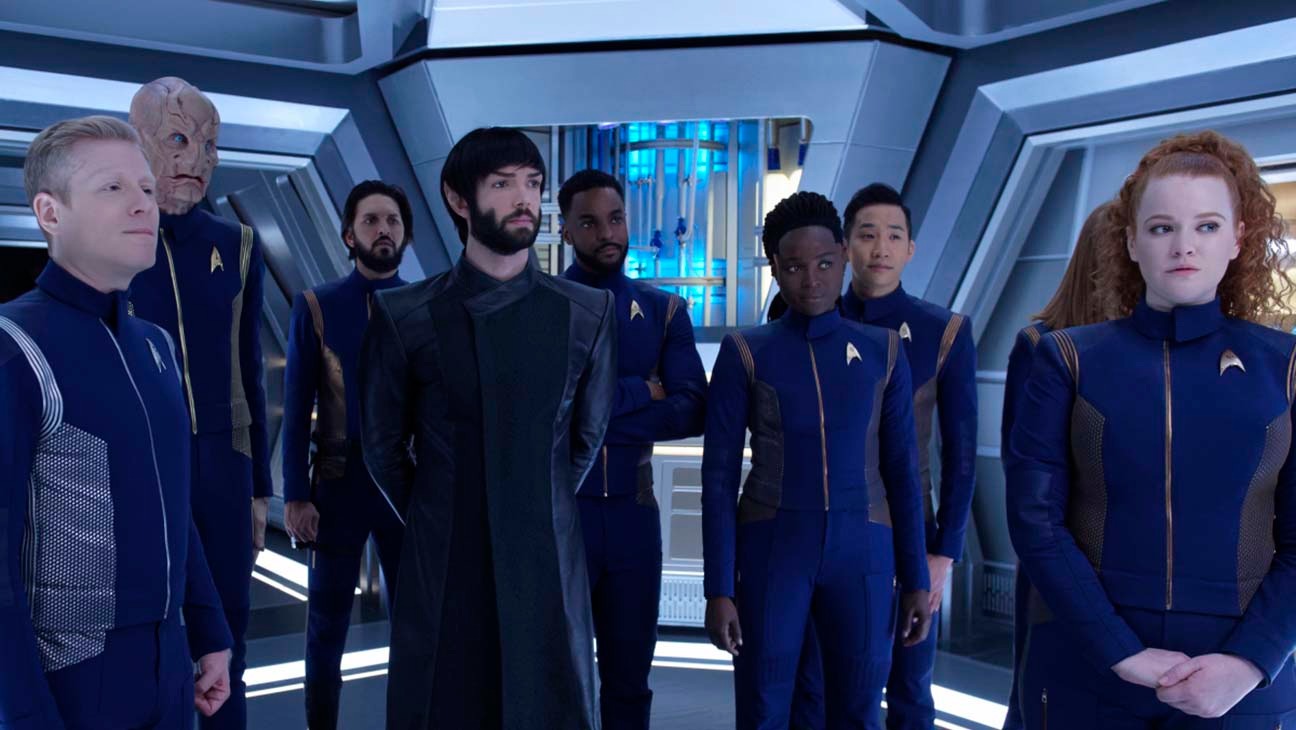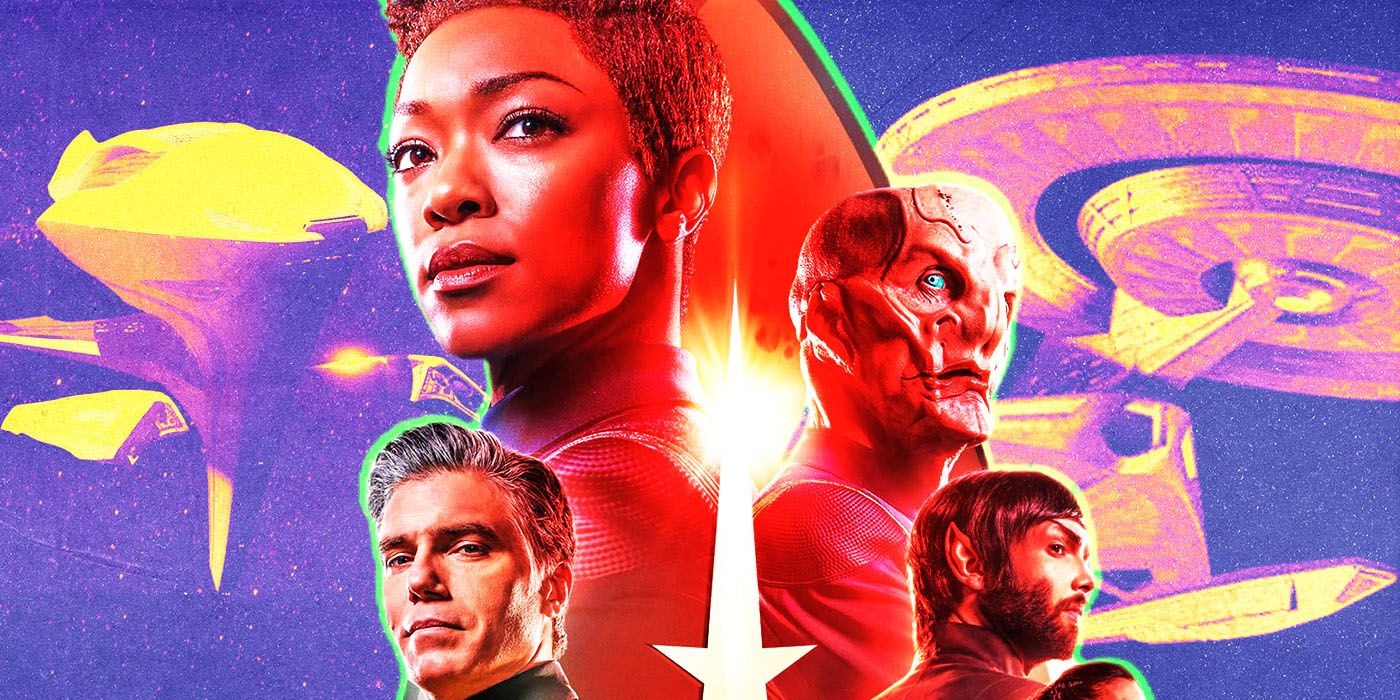Star Trek: Discovery’s season 2 wrapped up with the episode titled “Such Sweet Sorrow, Part 2”, which brought the mission to stop the dangerous artificial intelligence called Control to a conclusion. Control had managed to take over the covert organization Section 31.
But by the time the episode ended, the show had completely redefined itself. In an unexpected twist, the U.S.S. Discovery was wiped from official Starfleet records, and Michael Burnham, alongside her crew, journeyed 930 years into the future.

During season 2, the Discovery crew—working under the command of Captain Christopher Pike from the Enterprise—were focused on halting Control’s goal of wiping out all life with sentience.
To achieve this, they had to unravel two key puzzles: discovering the true identity of the Red Angel, who turned out to be Michael’s mother, Dr. Gabrielle Burnham, and understanding the meaning behind the appearance of seven red bursts scattered across space.
Control disguised itself as Captain Leland from Section 31 and aimed to gain access to 100,000 years’ worth of data the Discovery had gotten from a dying sphere. This knowledge would help Control reach full awareness and exterminate all living things.
In “Such Sweet Sorrow, Part 1”, Michael set her sights on taking Discovery into the far future to hide the data. Her crew also decided to accompany her into the 32nd century. The final face-off saw Discovery and the U.S.S. Enterprise team up to battle Control and Section 31’s entire fleet.
Admiral Katrina Cornwell laid down her life to shield the Enterprise. Though Control had more numbers, help came just in time when Ash Tyler showed up with the Klingon fleet led by High Chancellor L’Rell.
In addition, Saru’s fellow Kelpiens, who now controlled Ba’ul vessels and were led by his sister Siranna, joined the fight, assisting the Federation ships to wipe out their enemy. Inside Discovery, Georgiou fought Leland and managed to destroy the A.I. using a trap involving the spore drive’s containment system.
Still, none of that would matter without Michael succeeding in getting the Discovery to the 32nd century. Here’s a look at how she managed it and what this means for both the series and the franchise going forward:
Michael Burnham Is The Second Red Angel Who Sent The 7 Signals
Michael’s strategy to preserve the future required her to recreate the time-traveling suit her mother originally used, whose design they recovered from Section 31. This made her the second individual to take on the Red Angel role.
But when she couldn’t get the time crystal to function properly and open a wormhole, it was Spock who figured out her actual purpose—sending out the red signals. Earlier in the season, Spock had theorized that the bursts were intentional. Now, he realised each one had a role in helping Discovery complete their mission.
Michael had to travel into the past and send out the first five red signals. The first one took them to an asteroid field where they met Jett Reno, who was essential in powering the time crystal. The second signal led to Terralysium, intended to be their future refuge.
The third one was at Kaminar, Saru’s planet, where freeing the Kelpiens would later assist in their battle with Section 31. The fourth signal guided them to Boreth so Captain Pike could collect a time crystal, and the fifth signal pointed to Xahea, where Tilly’s friend Queen Po, who knew how to charge the time crystal, was waiting.
During the final space fight, Po also figured out how to take down Section 31’s drones. The first three signals confirmed it was Michael herself they had seen, not her mother, meaning she had encountered her future self. Because Spock’s shuttle was damaged, he couldn’t follow Michael through the wormhole.
The two shared a heartfelt goodbye before Spock returned to the Enterprise. The sixth signal, sent by Michael as the Red Angel, acted like a beacon to help Discovery follow her into the wormhole. The seventh signal fulfilled her vow to Spock, assuring him that they had made it to safety.
With time behaving differently, Spock didn’t detect the final burst until 124 days later, from the Beta Quadrant. By then, he had resumed his role as Science Officer aboard Captain Pike’s Enterprise, clean-shaven and back in uniform.
The Discovery Goes To The Future – Possibly For Good
There had been predictions that the Discovery would eventually leave its timeline, and the season 2 finale confirmed this. The show leaped to the 32nd century. This move became necessary because the sphere data had merged with Discovery’s systems.
The information couldn’t be deleted, nor could the ship be destroyed, as the data was defending itself. Michael realised the only solution was to physically remove Discovery from the 23rd century by carrying the entire ship into a time far beyond anyone’s reach.
Even though they managed to stop Control, the data was still too risky to remain in their era. On top of that, what it contained clashed with long-standing facts from the larger Star Trek universe.
By pushing Discovery into the future, the ship, which some viewers already felt had technology too advanced for its time, would now fit better into its surroundings. This change also presents a part of the Star Trek timeline that fans had never encountered before.
What Happens To The Discovery And Her Crew In The 32nd Century?
Once Discovery disappeared into the wormhole, Michael and her crew didn’t reappear again in the episode. Viewers had to wait until season 3 to get answers about how they were faring in the 32nd century. There’s reason to believe they successfully landed at Terralysium, the destination Michael had chosen.

She might also have reunited with her mother, although Gabrielle’s return to Terralysium was left uncertain after she vanished in “Perpetual Infinity”. With Control defeated, sentient life across the galaxy was preserved into the 3180s. But since they were now out of place in time, Discovery’s crew likely stayed hidden for a while—possibly blending in on Terralysium.
Interestingly, this jump into the future aligns with the events seen in the Short Trek episode “Calypso”, where a version of the Discovery—now with a female A.I. identity named Zora—met and developed a bond with a wandering soldier. In that episode, the ship was deserted and floating in space.
It’s possible the crew exited the ship at Terralysium and then sent Discovery away to protect it. That could mean future episodes will involve the crew going on a search for their missing vessel once again.
Why Nobody Talks About Discovery In Star Trek History
At the end of the season, Starfleet chose to bury everything related to the Discovery’s mission. After Control was destroyed, the Enterprise returned to Earth for repairs.
At Starfleet Headquarters, Captain Pike, Spock, Number One, and Ash Tyler stuck to a cover story—they claimed Discovery exploded in battle, killing everyone on board. Starfleet accepted their version, and Tyler was made the new head of Section 31, with the task of rebuilding the organisation (which links directly to the planned Section 31 spinoff).
Spock went further by suggesting that everyone aware of what happened be banned from ever speaking about Michael Burnham or the Discovery. Breaking this rule would be treated as treason. It’s likely this silence also applied to events from season 1, like the Klingon War and the Mirror Universe plot.
Even Michael’s adoptive parents, Amanda and Sarek, agreed to never mention her name again. Spock pushed for this secrecy to shield his sister and stop anyone from trying to rebuild the Red Angel suit using Klingon time crystals.
This also explains why future icons like Captain Kirk and Captain Picard never spoke of Burnham, and why Spock himself never revealed he once had a human sister.



